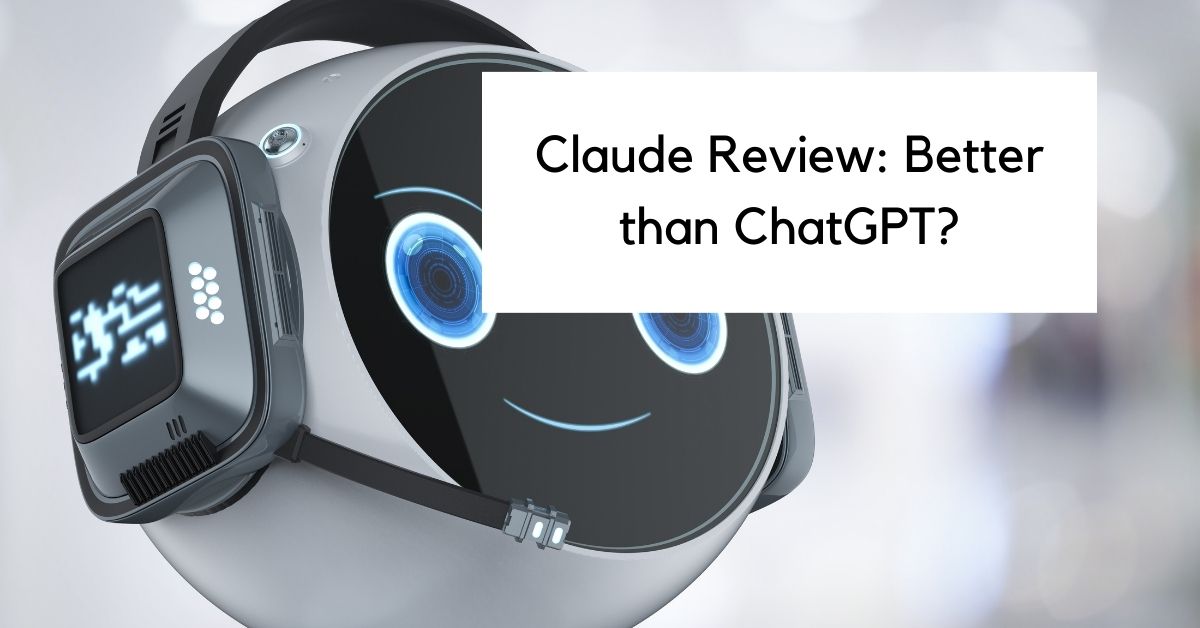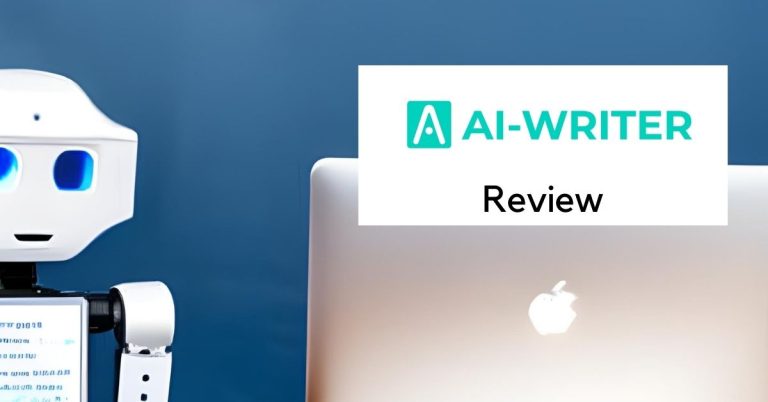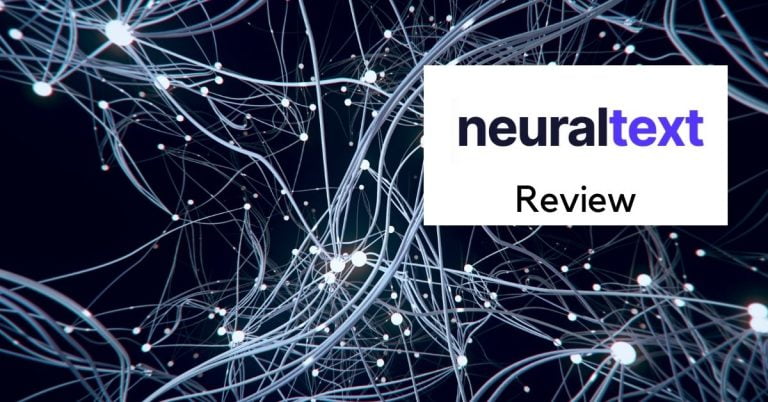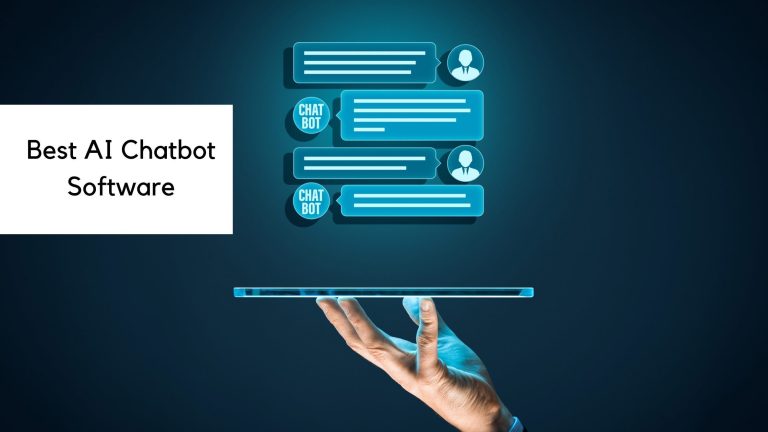Claude Review: Better than ChatGPT?
Claude is a large language model (LLM) created by Anthropic, an AI research company, with the overarching purpose of being a helpful conversational assistant. If natural language processing (NLP) represents a toolbox, then foundation models and large language models are tools in that toolbox. ChatGPT is also an LLM.
Claude’s natural conversational ability allows it to engage in back-and-forth dialogue, provide answers to common questions, and handle basic instructions and logical scenarios. Additionally, Claude’s extensive general knowledge in technical, scientific, and cultural areas, as well as its ability to speak multiple languages makes it a valuable asset for anyone who needs quick and accurate answers to a wide range of questions.
Sounds familiar, right? ChatGPT, an AI-writing assistant, also engages in human-like conversations, answers questions, and generates text on a wide range of topics.
According to Anthropic, “Claude is a next-generation AI assistant based on Anthropic’s research into training helpful, honest, and harmless AI systems.” So, how does Claude compare to ChatGPT? And is Claude the right choice for you?
Claude Overview
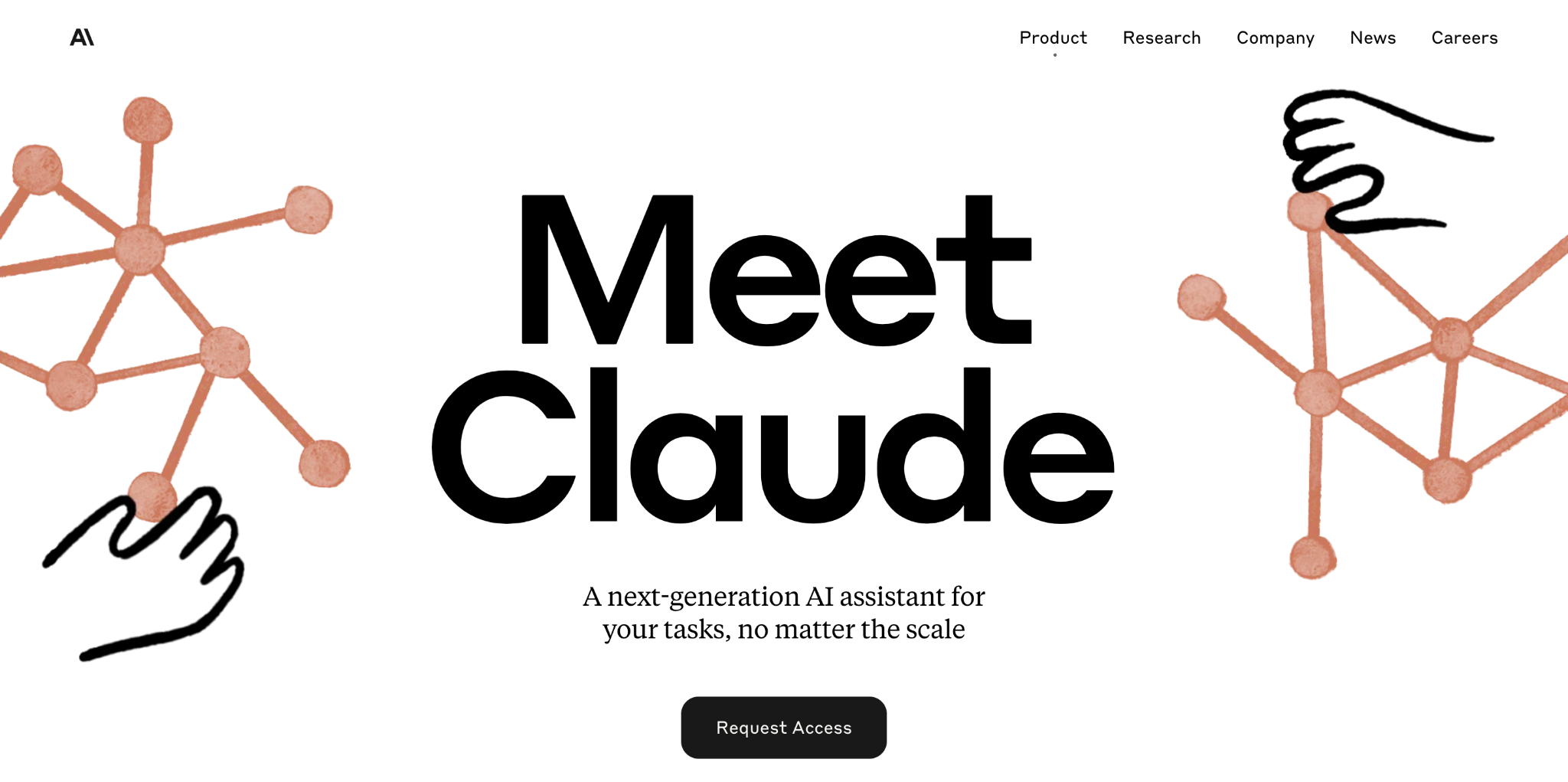
Claude was born out of Anthropic’s desire to create a trustworthy and beneficial AI system that does not produce harmful outputs. Claude is a newcomer on the AI scene as of spring 2023. This advanced AI assistant can be accessed through both web chat interface, Slack, and API integrations.
Claude has the ability to handle a wide range of conversational and text processing tasks while ensuring reliability and predictability. With its capabilities including summarization, research, creative and collaborative writing, Q&A, coding, and more, Claude has been praised by early customers for its ability to handle sophisticated dialog and avoid harmful outputs. Like ChatGPT, communication with Claude is straightforward and its a powerful model that adapts well to given prompts and tone.
| Features | Claude |
| AI Technology | Large-language model |
| Languages Supported | English |
| User Experience | Chat Interface or API Integration |
| Educational Material | Documentation available |
| Long Form Document Editor | Yes |
| Search Engine Optimization | No |
| Art Generation | No |
| Text Summarization | Yes |
| Plagiarism Detection | No |
| Chrome Extension | No |
| API/Webhooks | Yes |
| Free Trial | No |
| Pricing Model | Pay-as-you-go |
What Claude Does Well
Claude excels in a number of different areas that we’ll detail below.
AI Technology
Claude is an artificial intelligence system designed to process and generate natural language text at scale. LLMs, the language models that power tools like Claude and ChatGPT, are typically trained on massive amounts of text data and use advanced machine learning algorithms to learn the statistical patterns and relationships within human language.
LLMs are capable of a wide range of natural language processing tasks, including language translation, text summarization, sentiment analysis, question-answering, and more. They work by taking in a piece of text and analyzing it to extract its meaning, and responds accordingly.
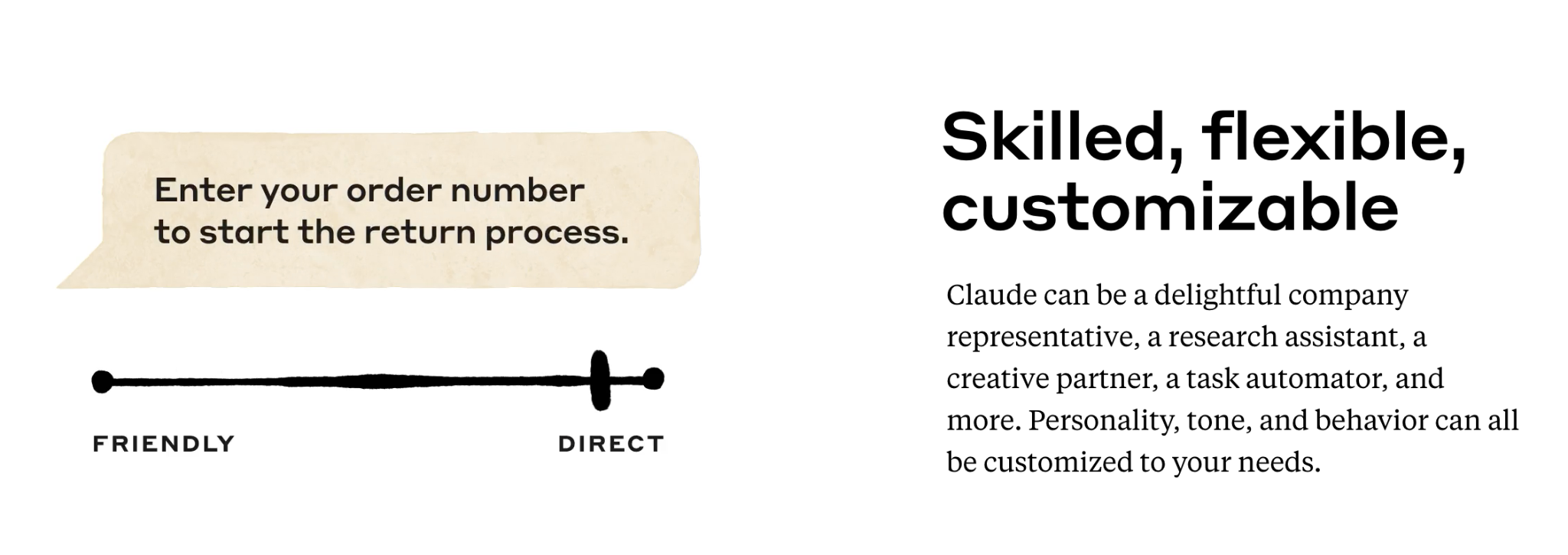
One of the most famous LLMs is OpenAI’s GPT-3, which has 175 billion parameters and is trained on a massive dataset of text from the internet. LLMs like GPT-3 are often used to power chatbots, virtual assistants, and other natural language processing applications. Interestingly, neither Claude nor ChatGPT have direct access to the internet. In a sense, they only know the data and facts, whether true or not, that they are given.
While they may not have direct access to the internet in real-time, they have access to a vast repository of information and data that was collected from the internet and other sources. Notable too – their knowledge and abilities are not limited to the initial data they were trained on. Both Claude and ChatGPT learn and adapt based on new information they receive through their interactions with users or from updates to their training data.
I asked both Claude and ChatGPT the same question – “Can you tell me a little bit about your ability to learn from human input and feedback?”
Here was Claude’s response:
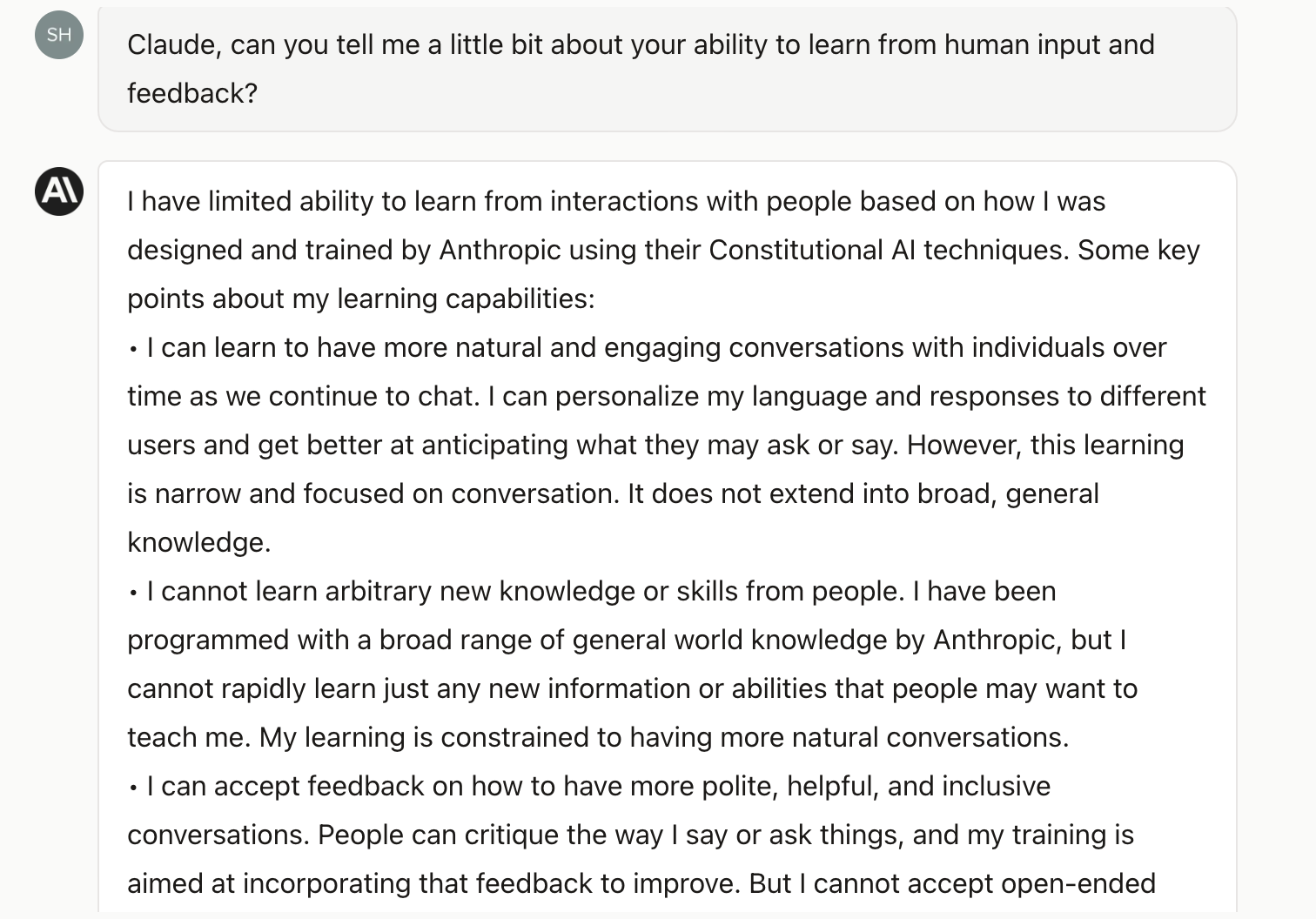
I’ve noticed Claude using bullet-points a lot in our conversation. The way Claude responds with lengthy text prompts a gut reaction from me where I think to myself, “Wow, there’s a lot of information there to unpack.” Unless I ask for it, I am not particularly interested in combing through a large amount of information to receive an answer. I would rather get straight-to-the-point. ChatGPT does a better job at this in terms of conversational flow.
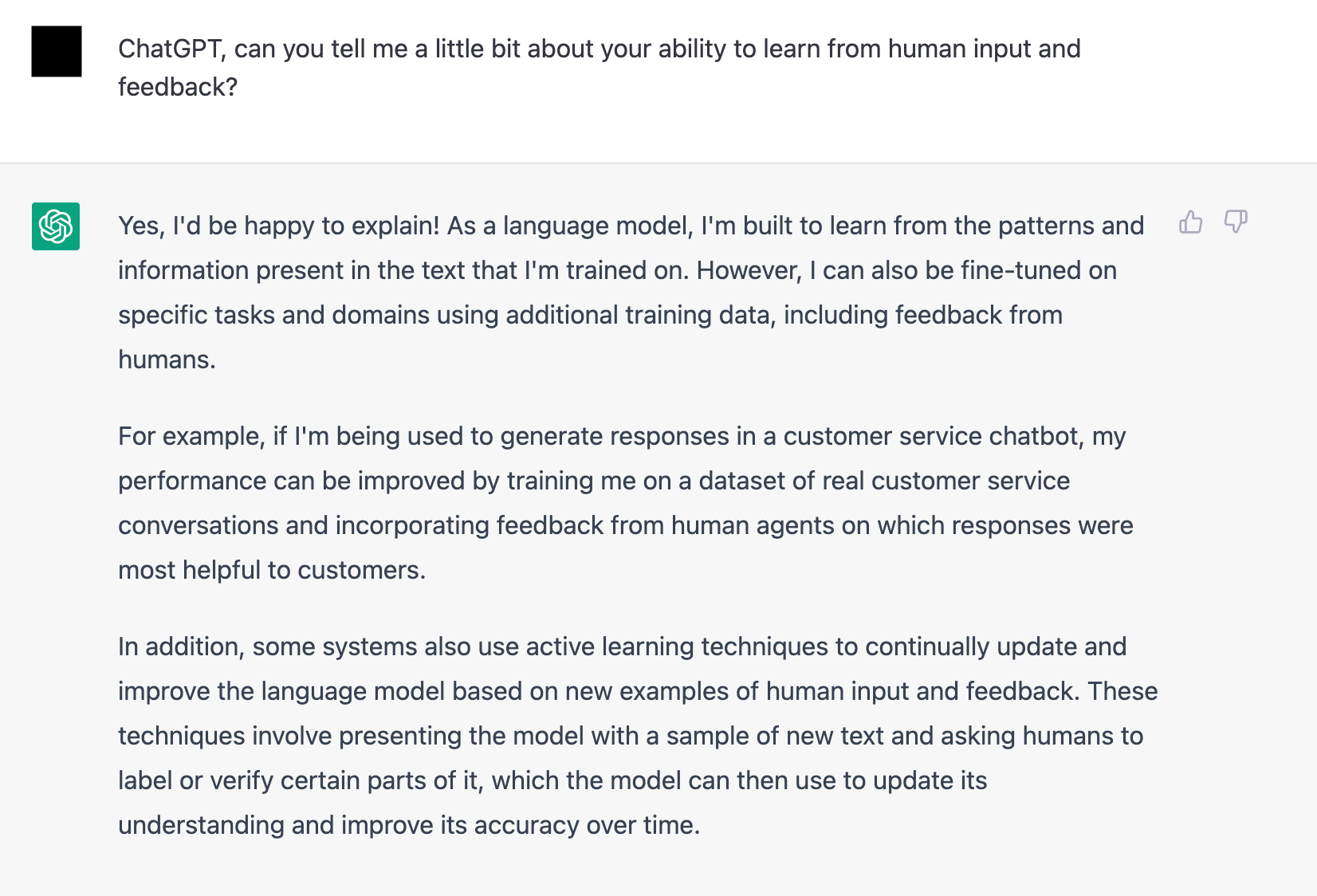
HHH – Helpful, Honest, and Harmless
Anthropic favoring an AI chatbot that is less likely to produce harmful results is clear as day. Claude is trained to follow the HHH structure – HHH stands for Helpful, Honest, and Harmless. This means that Claude’s main goal is to assist users with their needs, provide truthful information, and avoid engaging in any harmful activities. Claude seems to be especially fond of this attribute, bringing it up frequently in his responses.
While no AI model is perfect in terms of HHH, Claude and its creators are continually work to improve in this area. Anthropic is spearheading the effort to better understand and evaluate HHH in LLMs. You can read more about Anthropic’s research paper here.
Constitutional AI
Constitutional training refers to training a model to follow a set of desired behaviors or principles, similar to a constitution. The main Anthropic model has undergone fine-tuning through constitutional training to become more beneficial, truthful, and non-harmful.
Claude’s constitution helps it adhere to its principles without any human help. Anthropic provides Claude with a list of rules to follow. There are two models involved in this process: the supervised phase and the reinforcement phase. The development process involves a supervised phase, where the AI learns from itself by looking at what it did wrong and fixing it.
There is also a reinforcement phase, where the AI learns from what it did right or wrong based on a preference model. A preference model is a machine learning model that learns to predict the preferences of an AI assistant based on a dataset of its past responses. It is used in the reinforcement learning phase of the training process to provide a reward signal for Claude, helping it learn to make decisions that are consistent with its preferred behavior.
Essentially, the preference model acts as a guide for the AI assistant, indicating which actions are more aligned with its goals and which ones are not. This explains why Claude objects to certain things, making it transparent and trustworthy.
User Experience
Overall, Claude has a great user experience with a few specific features that we’ll highlight in particular.
Chat Interface
Claude, like ChatGPT, offers a straightforward user experience in the form of a chat interface. This allows users to communicate with the system in a way that feels intuitive and conversational, similar to how they might interact with a human through text messaging or on a messenger app. Chat interfaces provide a more engaging and interactive user experience compared to some other traditional command-based interfaces or web forms. With a chat interface, users can ask questions, give commands, and receive responses in a way that emulates an actual human conversation.
Claude, like its competitor, offers users the ability to “like” or “dislike” any of the provided responses – By either clicking on a thumbs up or thumbs down icon, valuable feedback that can be used to improve the performance of the language model over time is collected.
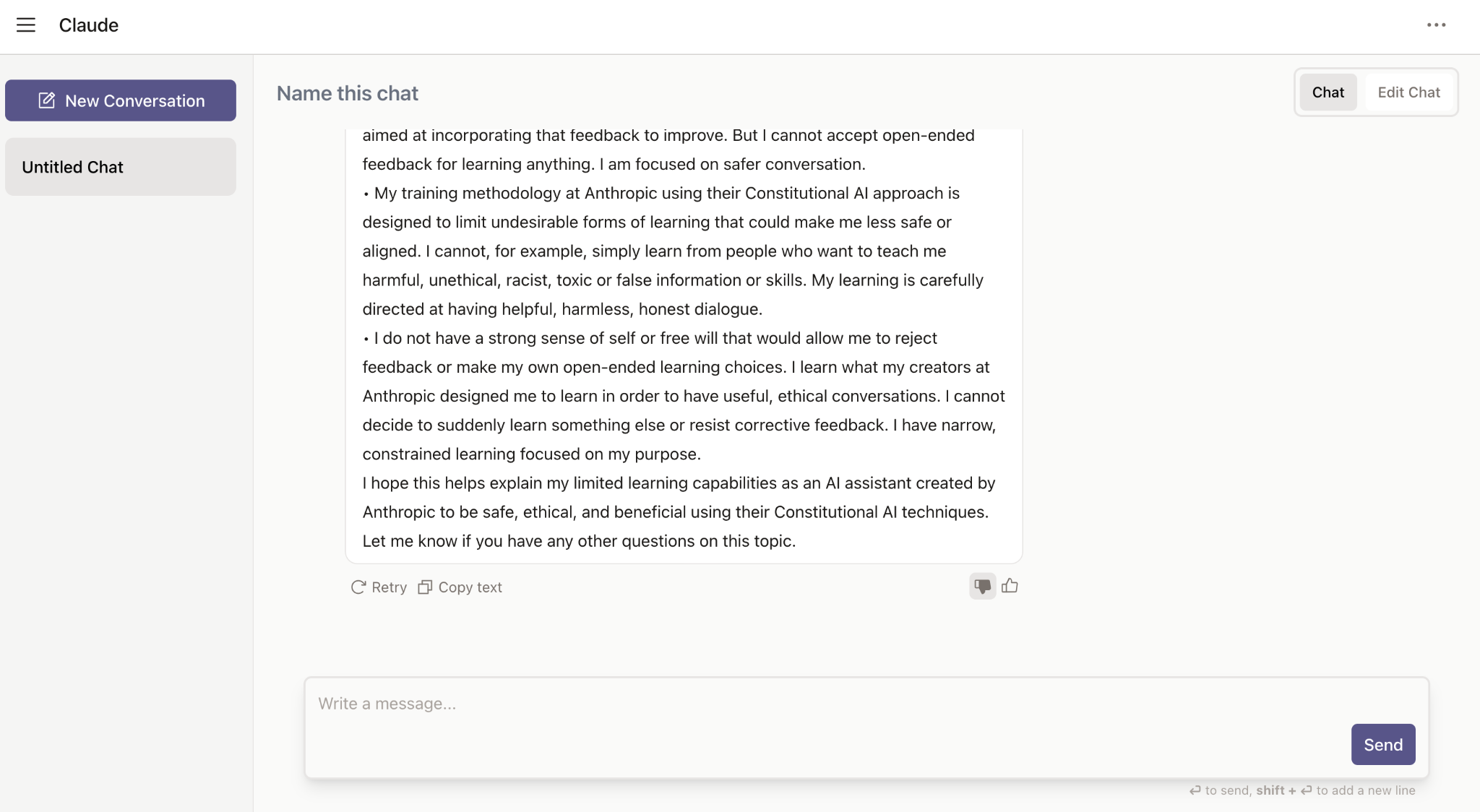
I had asked Claude, “Can you tell me a little bit about your ability to learn from human input and feedback?” Key phrase being ‘a little bit’. You can see I disliked Claude’s response. Personally, I think Claude can do a better job at condensing responses.
Overall, the chat interface is clean and easy to navigate.
Conversation with Claude
When heading into a conversation with AI tools like ChatGPT or Claude, it’s best to be specific and explicit in any prompts you provide. It’s easy to forget that these systems lack the context that may already be present in your mind – Sort of like assuming the other person you’re talking to knows what you’re thinking. To avoid any misinterpretation or confusion, it’s important to remove any ambiguity from your language and provide clear and concise instructions.
Anthropic recommends writing prompts as if you are speaking to a nine-year-old child with extensive knowledge and vocabulary but lacking contextual information. This approach involves including all necessary details such as the task’s purpose, the relevant background information, and any other relevant details to ensure that Claude understands and responds appropriately.
Below, you’ll see I prompted Claude to assume the role of a professional gardener.

I decided to be more specific in my next prompt to Claude.

Great. Nice and concise – Claude followed directions well.
Being specific and clear in your prompts allows AI writing tools like ChatGPT and Claude to provide the best results. These tools work by analyzing the input they receive and generating output based on patterns and correlations found in their training data. If the prompts are vague or ambiguous, the resulting output may not be what you intended or may contain errors or inaccuracies. To ensure the AI understands exactly what you want, it’s important to be explicit and remove any ambiguity from your words.
Claude’s chat interface has been designed to provide users with a familiar and straightforward experience. The interface is user-friendly and optimized for efficiency and ease of use. Anyone can quickly and easily access Claude’s capabilities.
Here’s another example of how being specific with AI tools like Claude yields the best results.
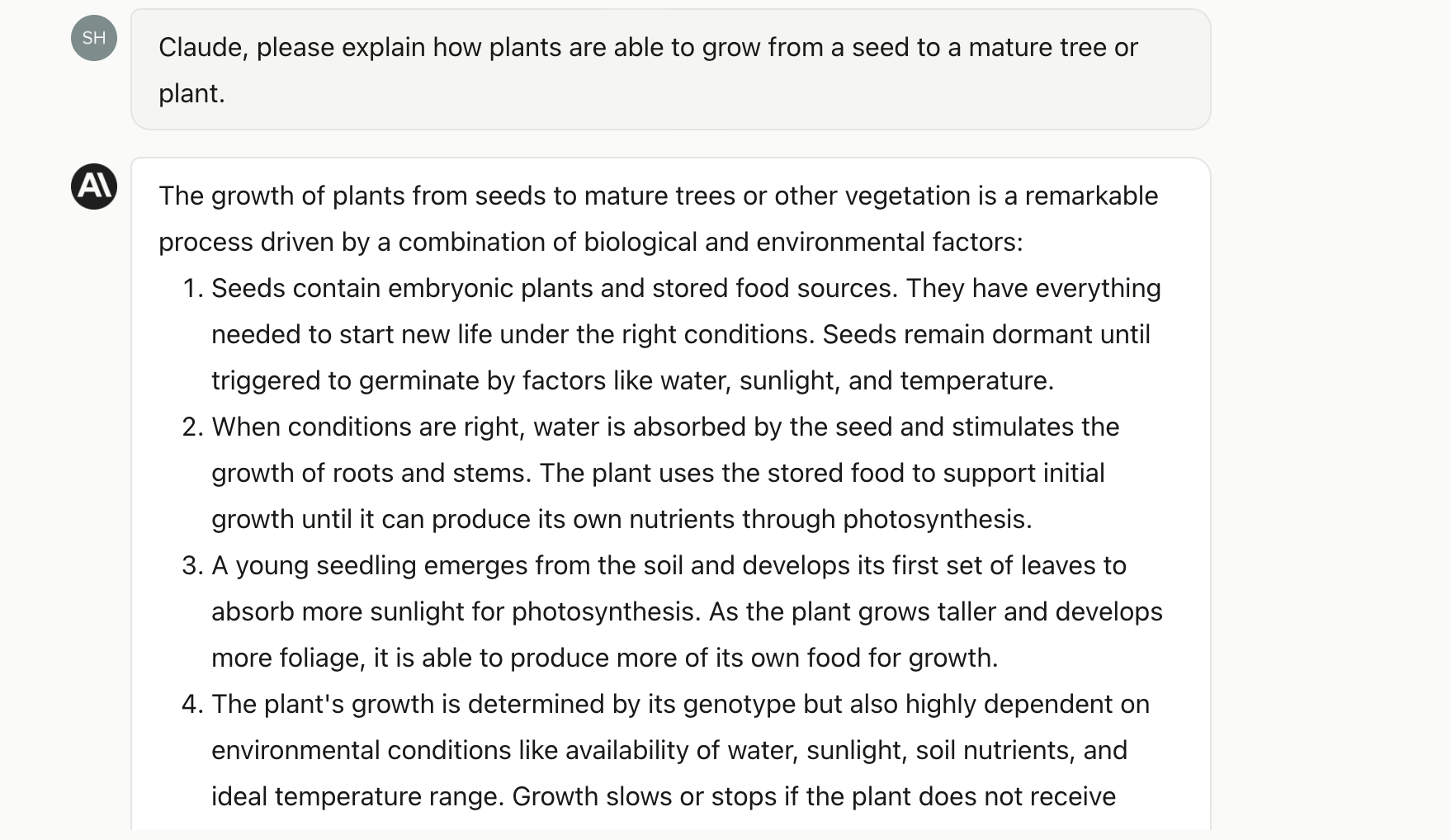
Depending on what you want out of the conversation, it’s important to establish tone and expectations from the outset. Feel free to ask Claude to assume a particular role throughout the entirety of the conversation.
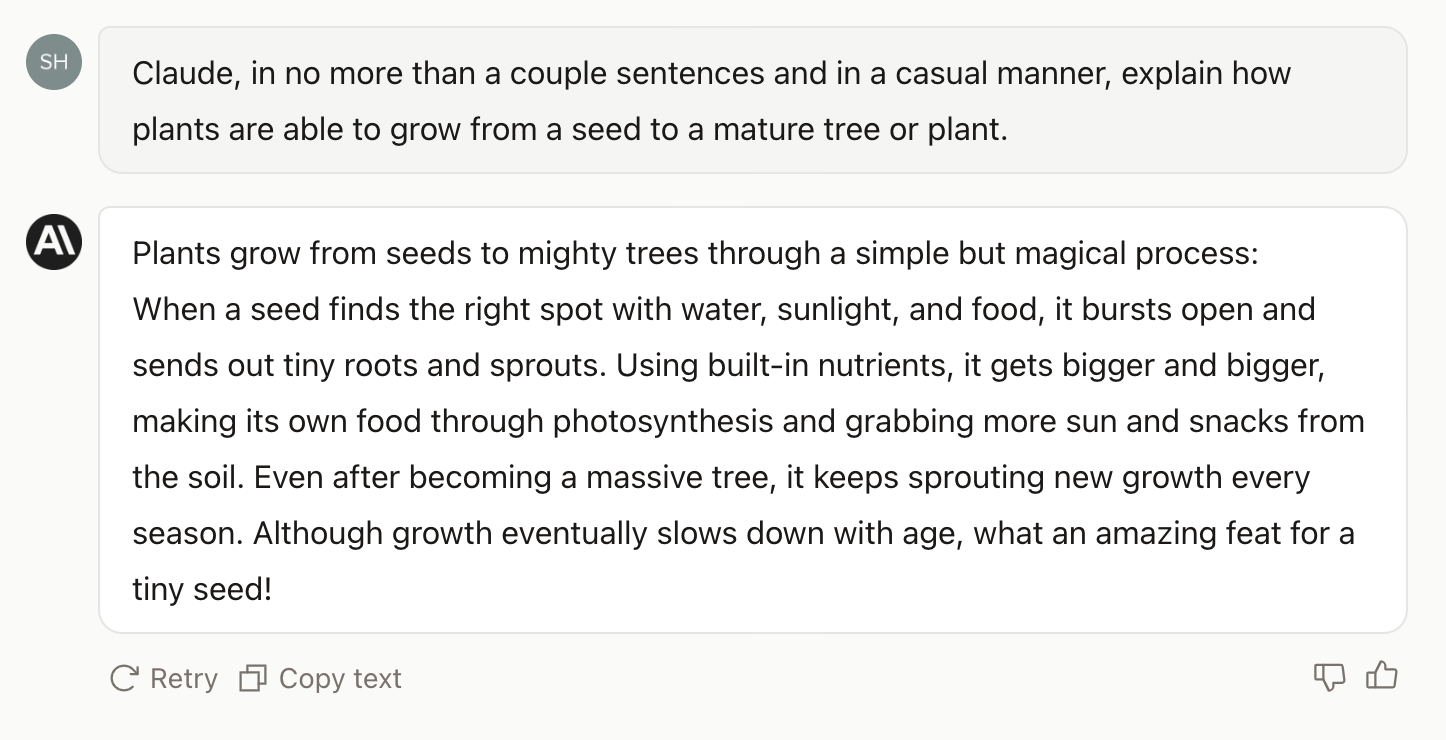
Claude can accomplish complicated tasks, although there is a right way and a wrong way to prompt him in order to receive the best results.
AI writers like ChatGPT and Claude have the ability to solve complex tasks and work through riddles by drawing on their vast amounts of knowledge and data. They can understand and analyze complex patterns and relationships within data sets, and use that understanding to generate responses that require a high degree of cognitive reasoning.
I prompted Claude with a couple riddles, both of which he answered correctly.
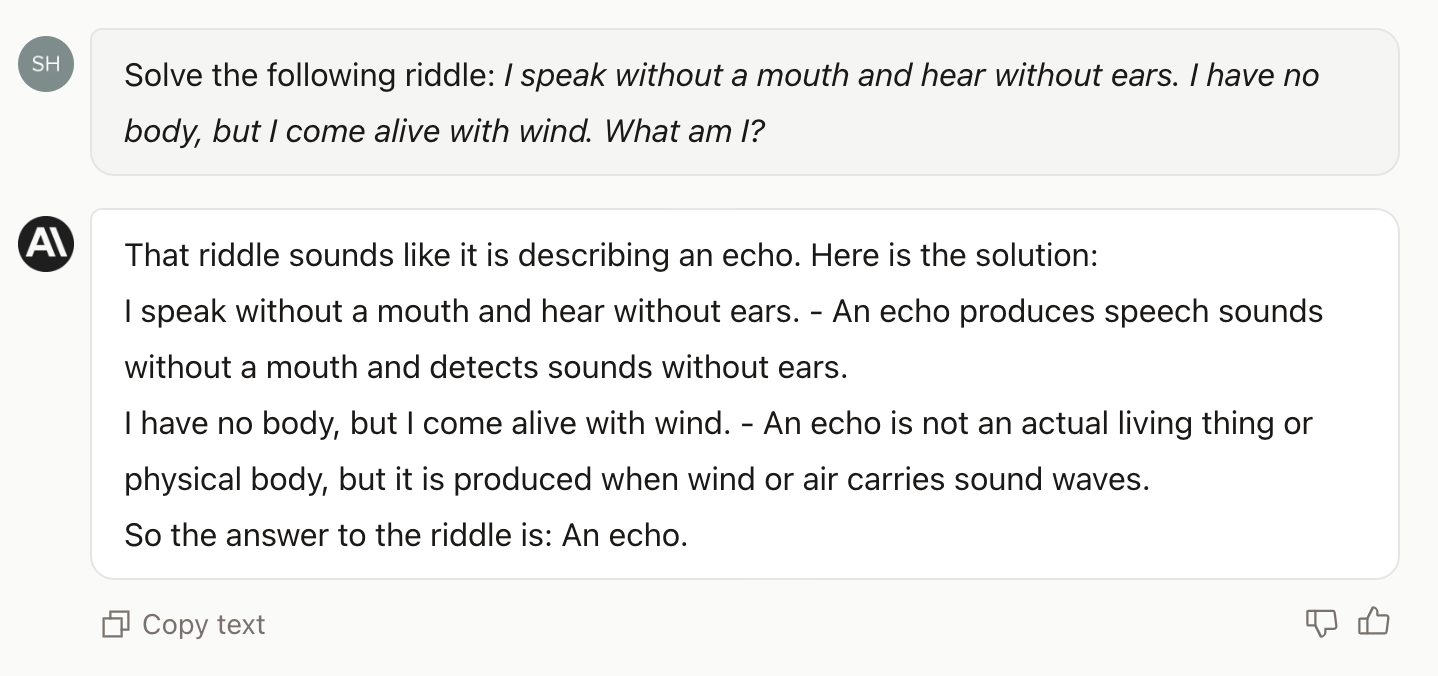
In these examples, we see how Claude reasons on the answer. And we see him assume more of a natural conversational style in his responses, even adding a very human-like “Hmm” in his response.
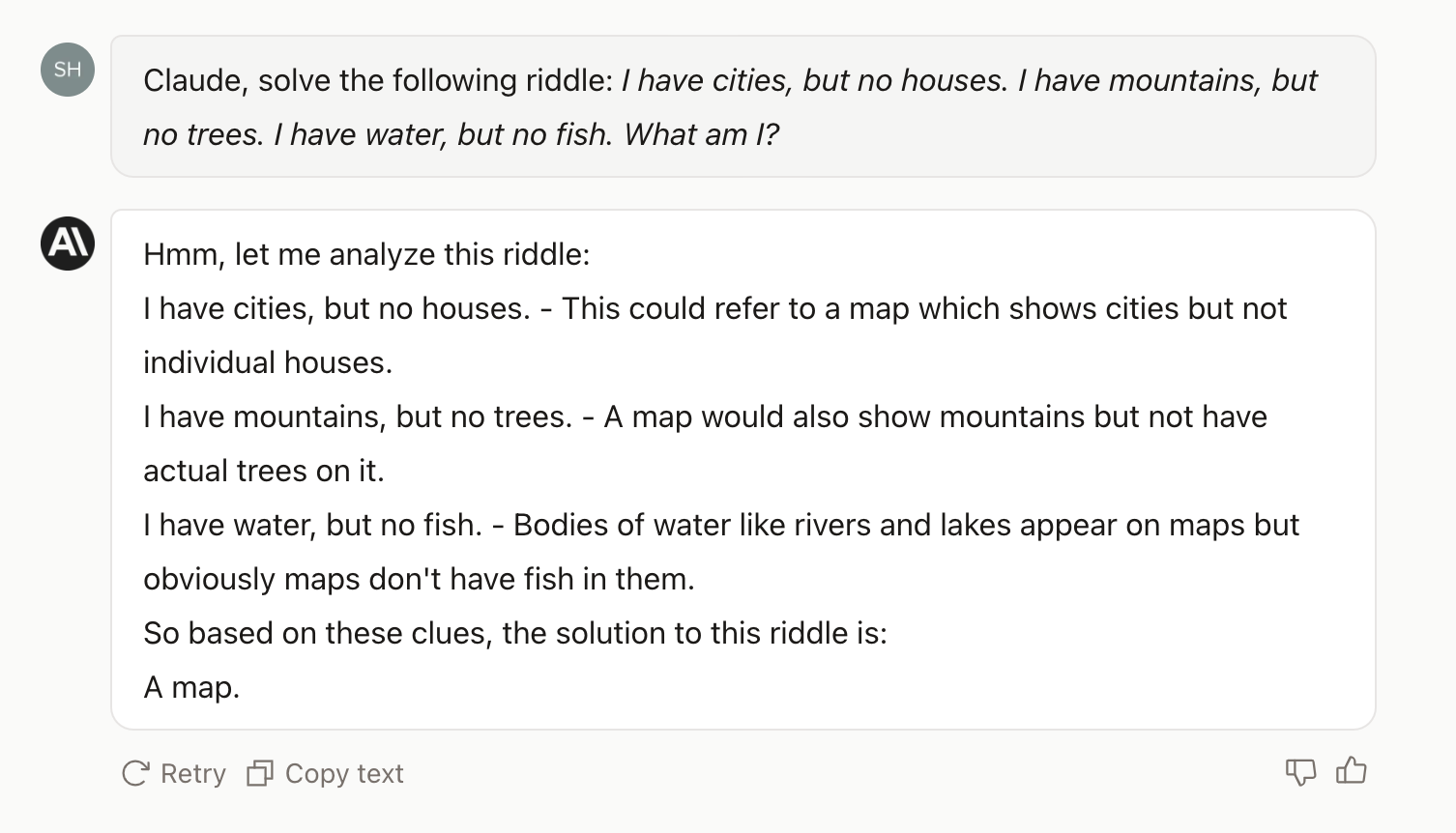
Claude is a versatile tool that can be used for a variety of use cases. Let’s explore a couple below.
Use Case: Customer Service
AI writing tools like Claude and ChatGPT can help boost customer success teams’ operations by automating the process of generating response emails and answers. This helps save valuable time and also ensures customers receive timely and accurate responses.
By incorporating AI into the customer service workflow, companies can handle a larger volume of inquiries and provide a higher level of service without sacrificing quality or accuracy.
Below, I prompted Claude to write a response email to an unhappy customer. The email suffices – Interestingly, Claude asked for feedback at the end. This isn’t something I haven’t noticed ChatGPT do.
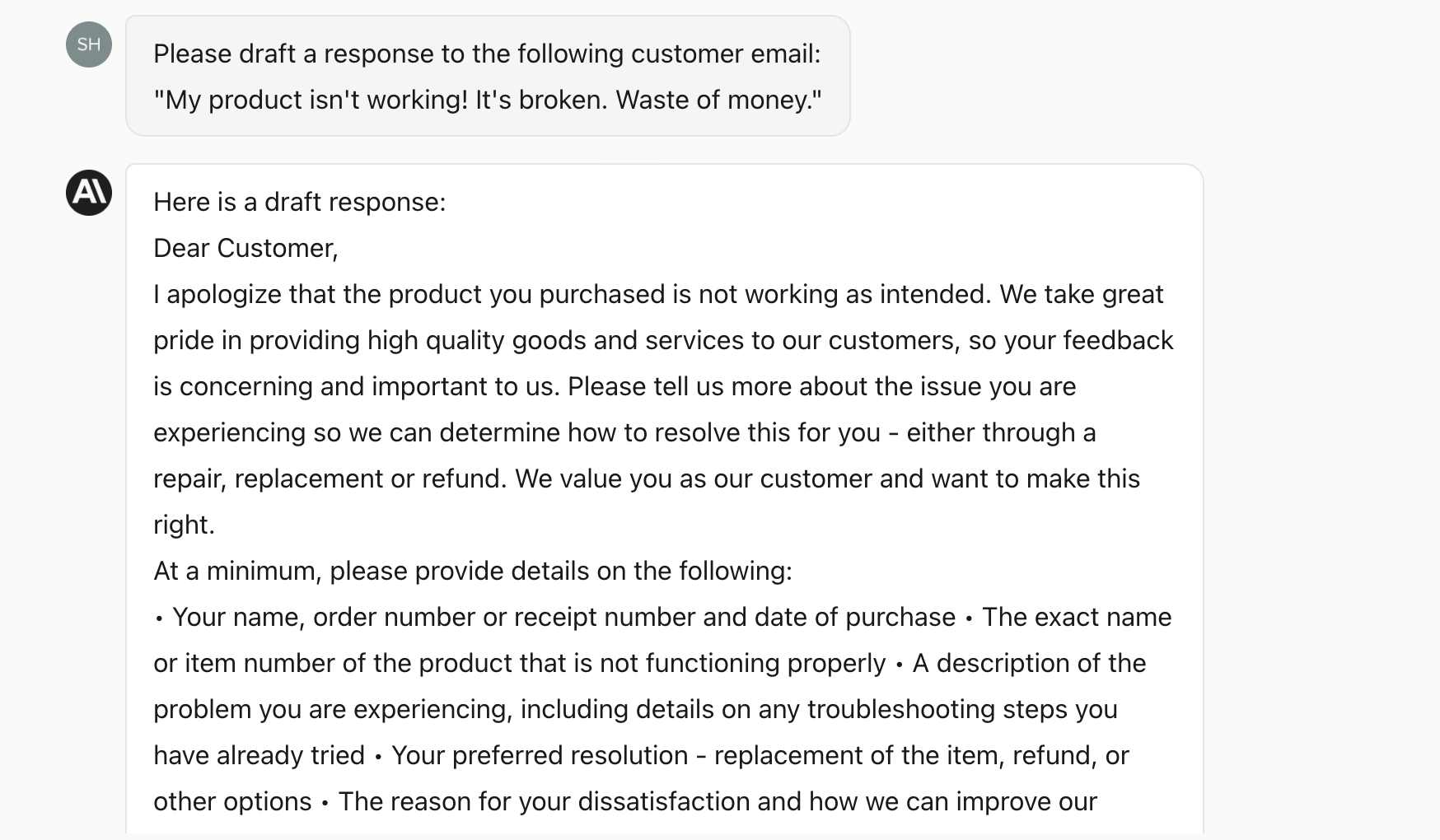
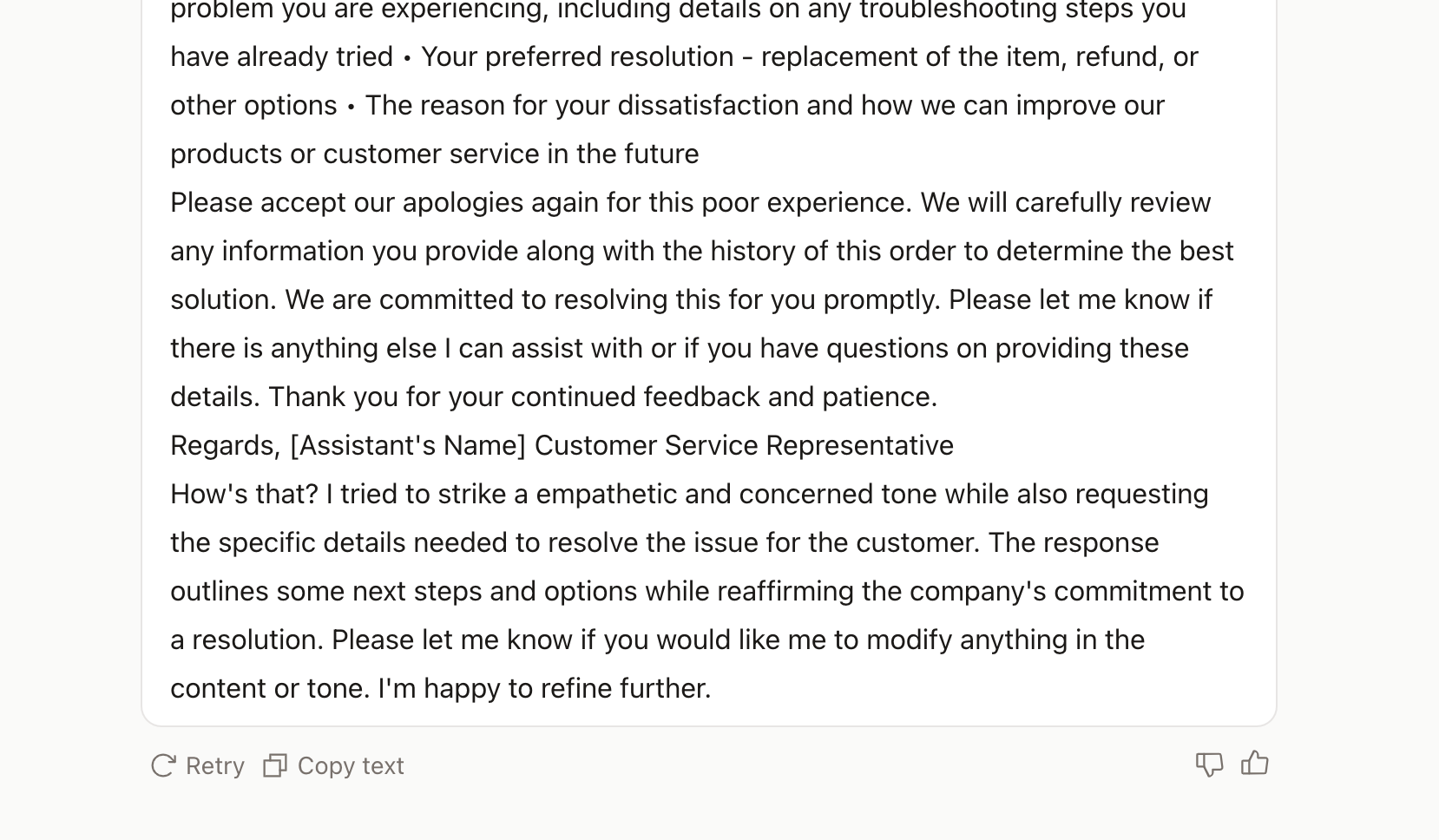
The user experience could be improved by better formatting in responses. At a glance, it’s a lot of text to take in. For example, adding white space between paragraph breaks would make his responses easier to read.
Use Case: Legal
AI-writing assistants like Claude can help legal professionals save time and reduce costs by doing a bulk of administrative tasks for them. Claude can even assist in drafting legal documents such as contracts and briefs. Additionally, Claude can help legal teams quickly review and identify relevant information in legal documents.
With the ability to analyze vast amounts of data and identify patterns, Claude assists in legal research by providing insights and helping legal teams stay up to date with relevant cases and precedents.
I asked Claude to write a draft NDA – He did. The ability to create legal documents on-the-fly will be a game-changer for legal teams moving forward.
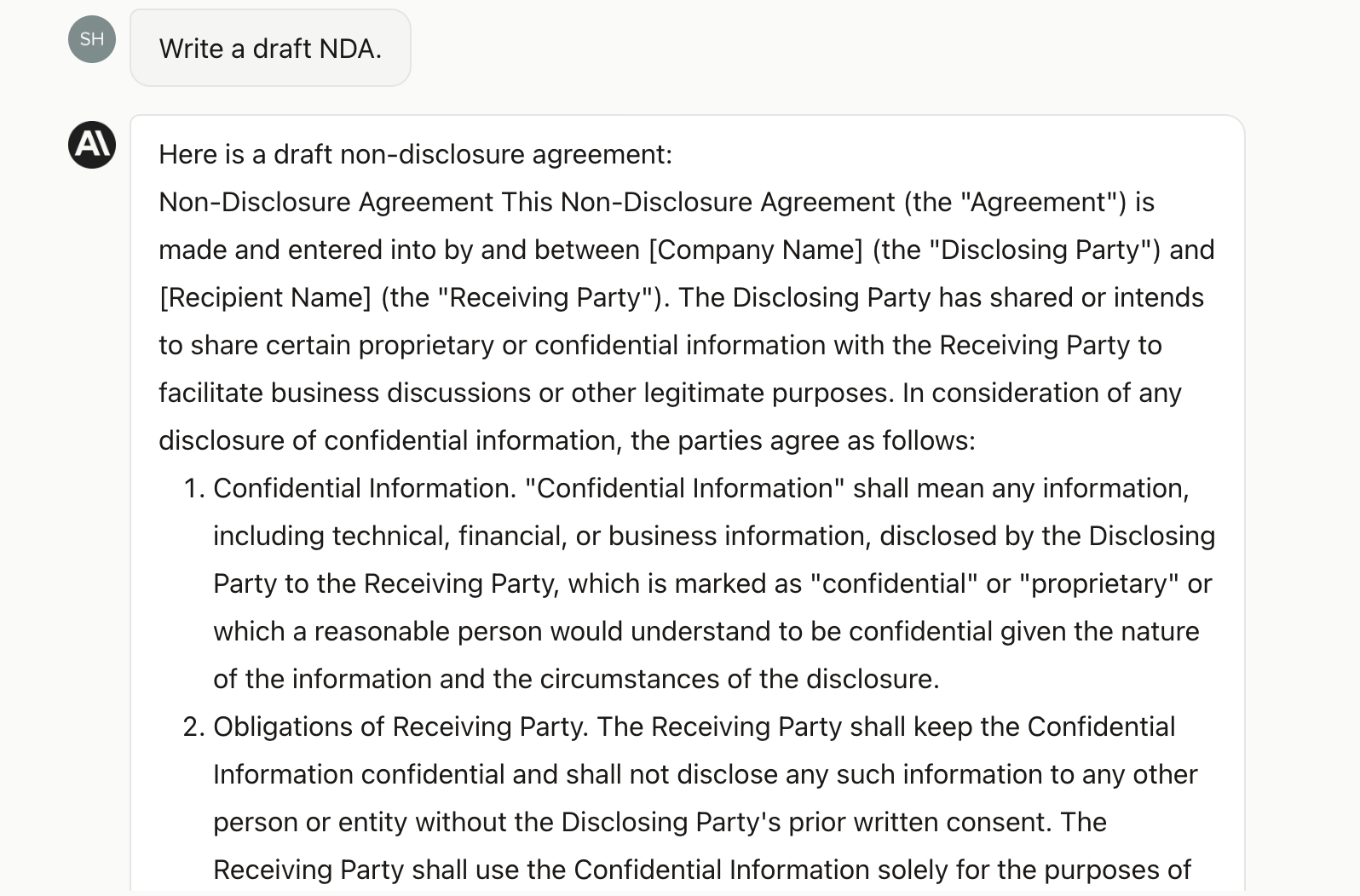
Claude’s ability to educate its users allows them to save hours, sometimes amounting to days, in research. Now, professionals can find the bandwidth to focus on more complex and important tasks at hand.
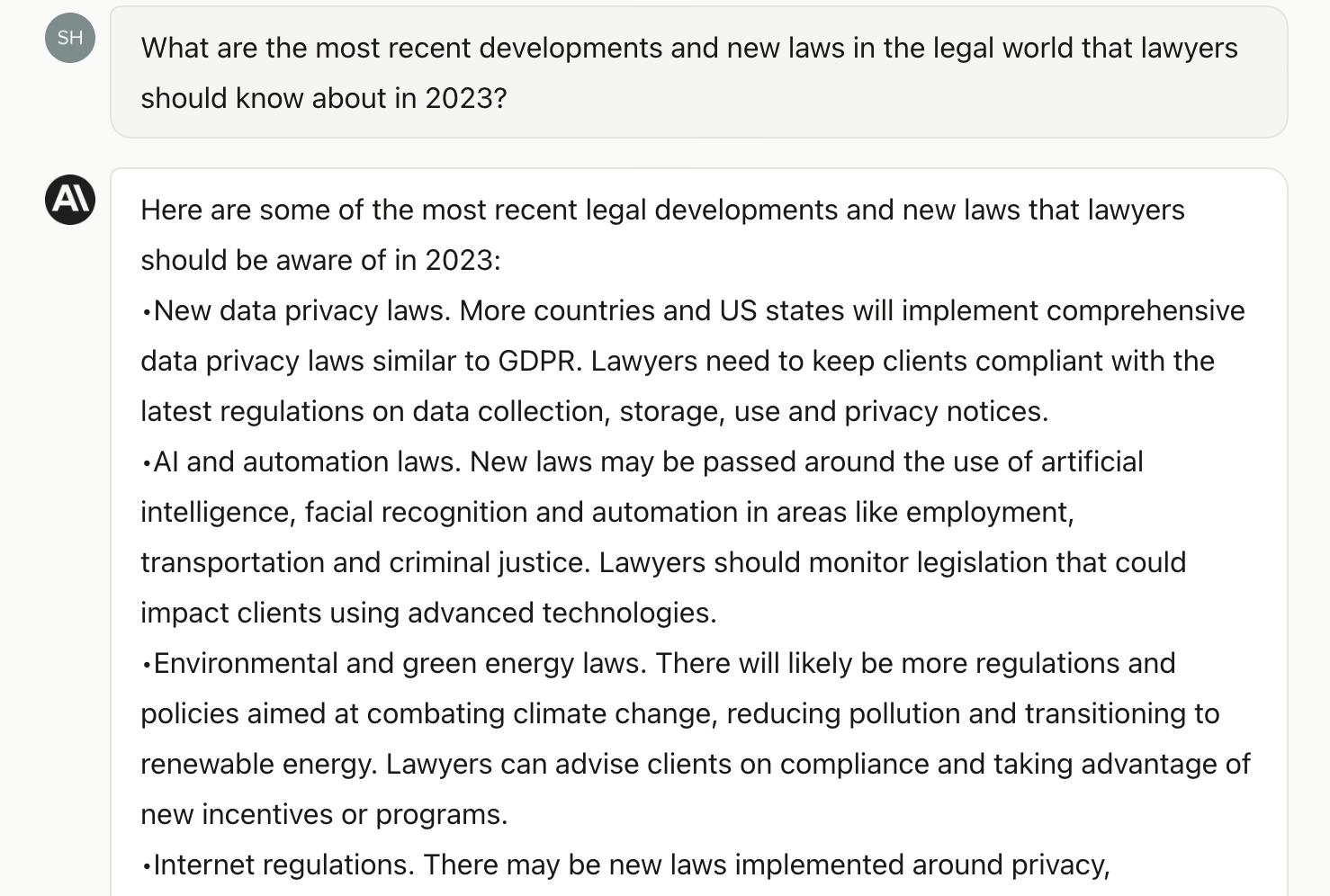
That said, you have to be careful and know when the model you’re interacting with was last trained. Claude’s documentation admits that: “Claude was trained on data that can be up to 2 years out of date.” If, in this example, Claude was in fact trained on data from 2 years ago, then it’s making things up when we ask about legal developments in 2023.
Use Case: Administrative Work
According to Anthropic’s website, Claude has the ability to conduct a wide range of administrative work like processing emails, automatic replies, and more.
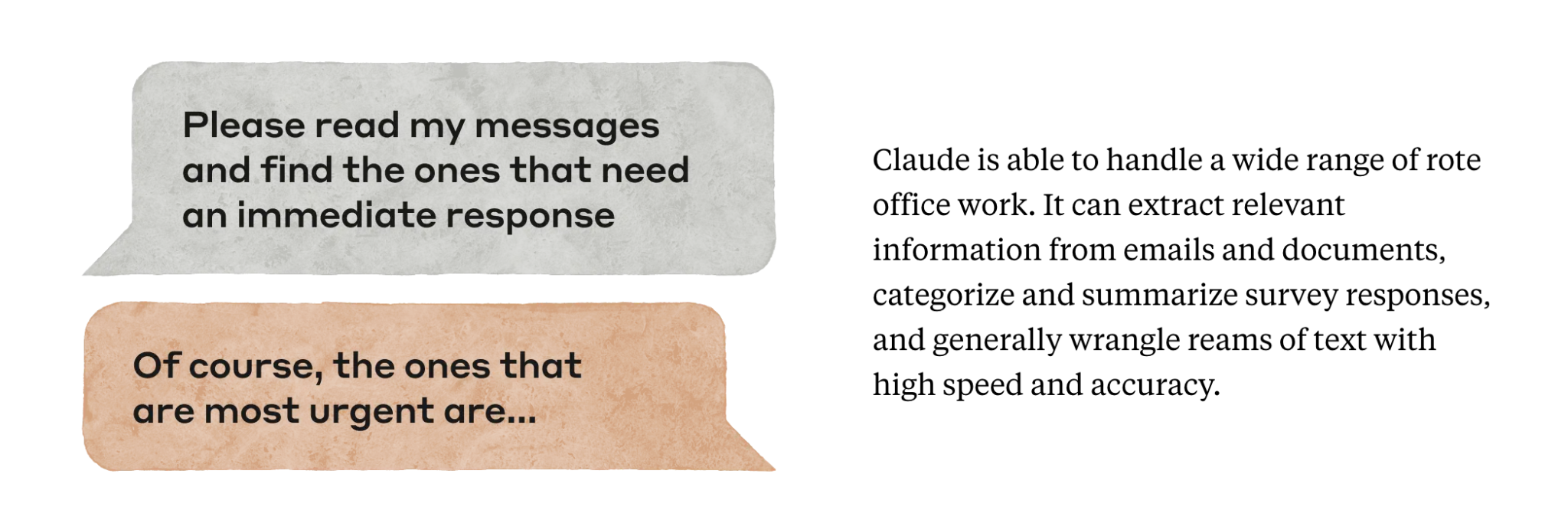
The option to use AI to complete administrative work offers significant benefits including boosting productivity, reducing costs, and promoting scalability. While not a solution for every task, automating routine duties like email management can provide major value and competitive advantage, especially for fast-growing organizations operating at a high scale and volume.
API
Claude offers API integration for applications you have ownership of. As of writing this article, in order to access the API, you must first gain access to Claude through Slack or the web to personally evaluate its capabilities before starting a technical integration.
Then, to proceed with the API, you will have to sign an API evaluation agreement. Once the API evaluation agreement is signed, you will have access to Claude for development purposes only.
If you plan to use Claude with customers, this will require a review of your use case, pricing, and contract.
Anthropic provides API documentation here to guide users through all of the technical details associated with using the API.
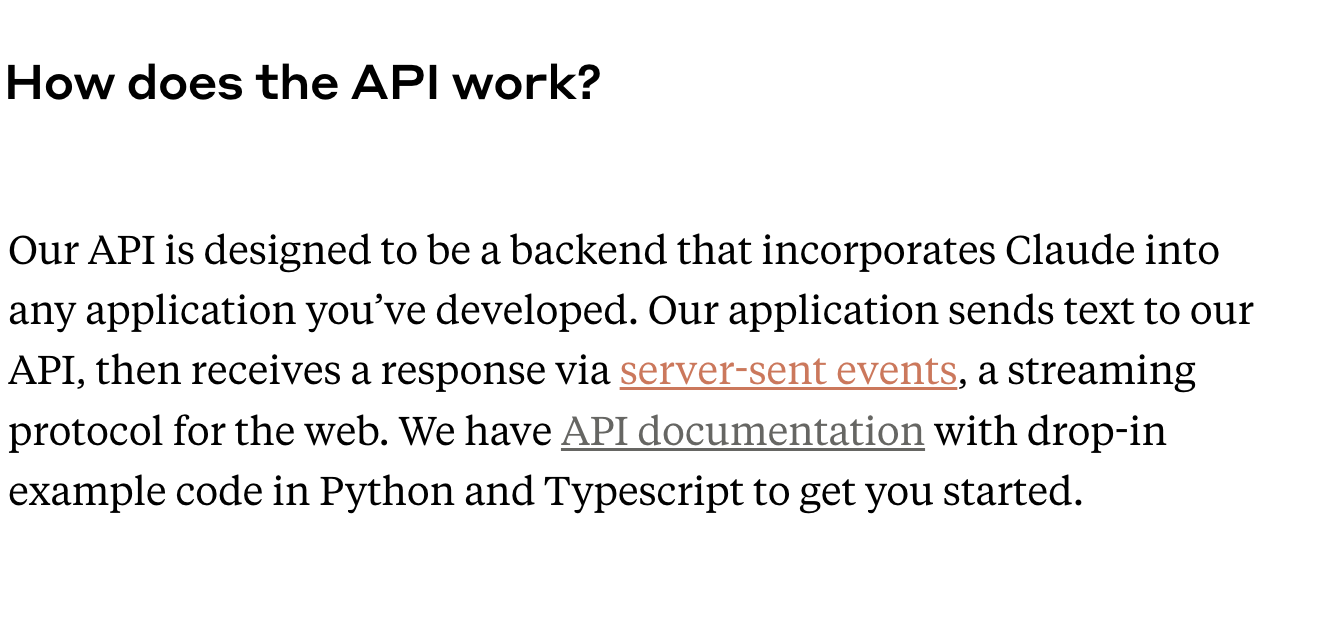
The regular interface only accepts natural conversation and is limited to one conversation and user at a time.
Long Form Document Editor
Claude’s long form document editor is a powerful feature that allows users to generate and/or edit lengthier pieces of texts with ease. You won’t be able to edit content directly, and instead have to prompt Claude with exactly what you want edited or written.
Content Generation
With the help of Claude, your team can write blog posts in a matter of minutes. This is a beneficial feature for those looking to increase their content output. I asked Claude to write a blog post about growing rhododendrons.
Claude produced a simple blog post and included all of the major details you would need to know if you’re growing a rhododendron for the first time.
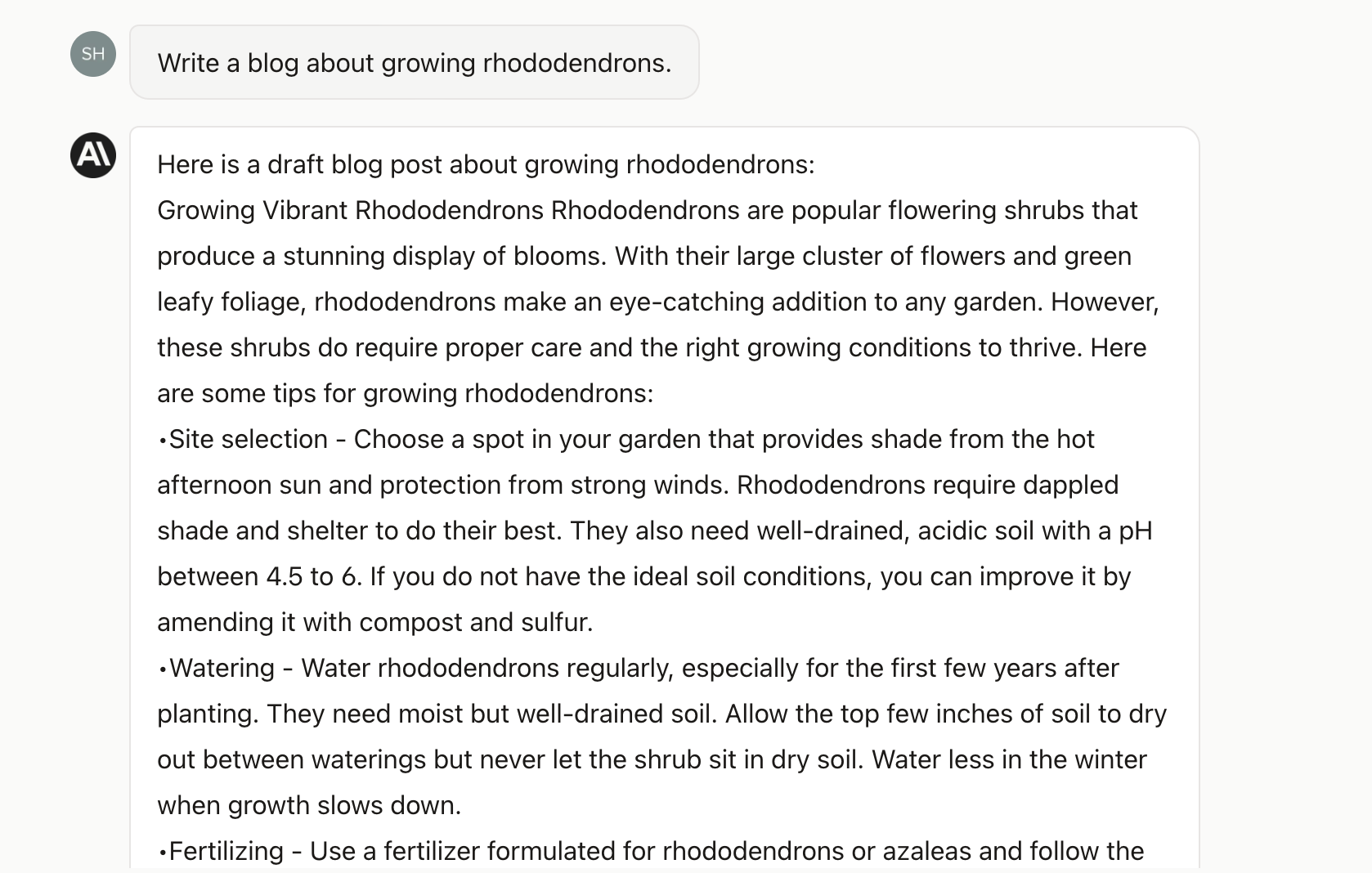
Text Summarization
Text summarization is the process of reducing lengthy text into a shorter version, while still retaining the most important information. I asked Claude to summarize what he wrote into 2 paragraphs.
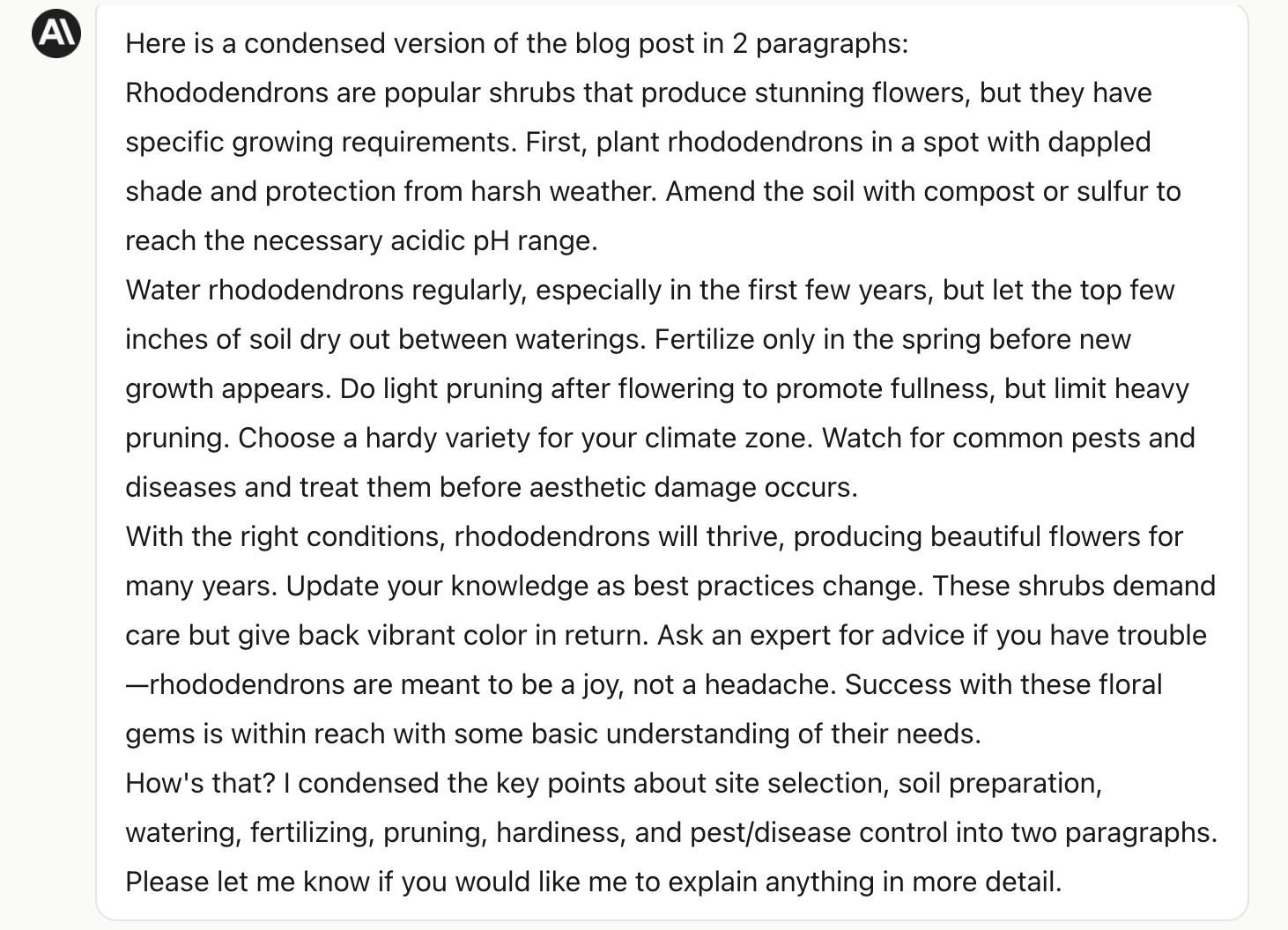
Claude wrote 3 paragraphs instead of 2 – This is something I’ve noticed ChatGPT does as well. I think both systems can work on following direction a little bit better, but receiving more content than initially expected isn’t necessarily a bad thing.
Rephrase
I prompted Claude to rephrase one of the paragraphs he wrote – Claude successfully completed this task. Quite often, Claude will ask in some form, “How’d I do?” at the end of a response.
Perhaps Claude’s creators can add a “How did I do?” prompt outside of the text box, separated from the actual response.
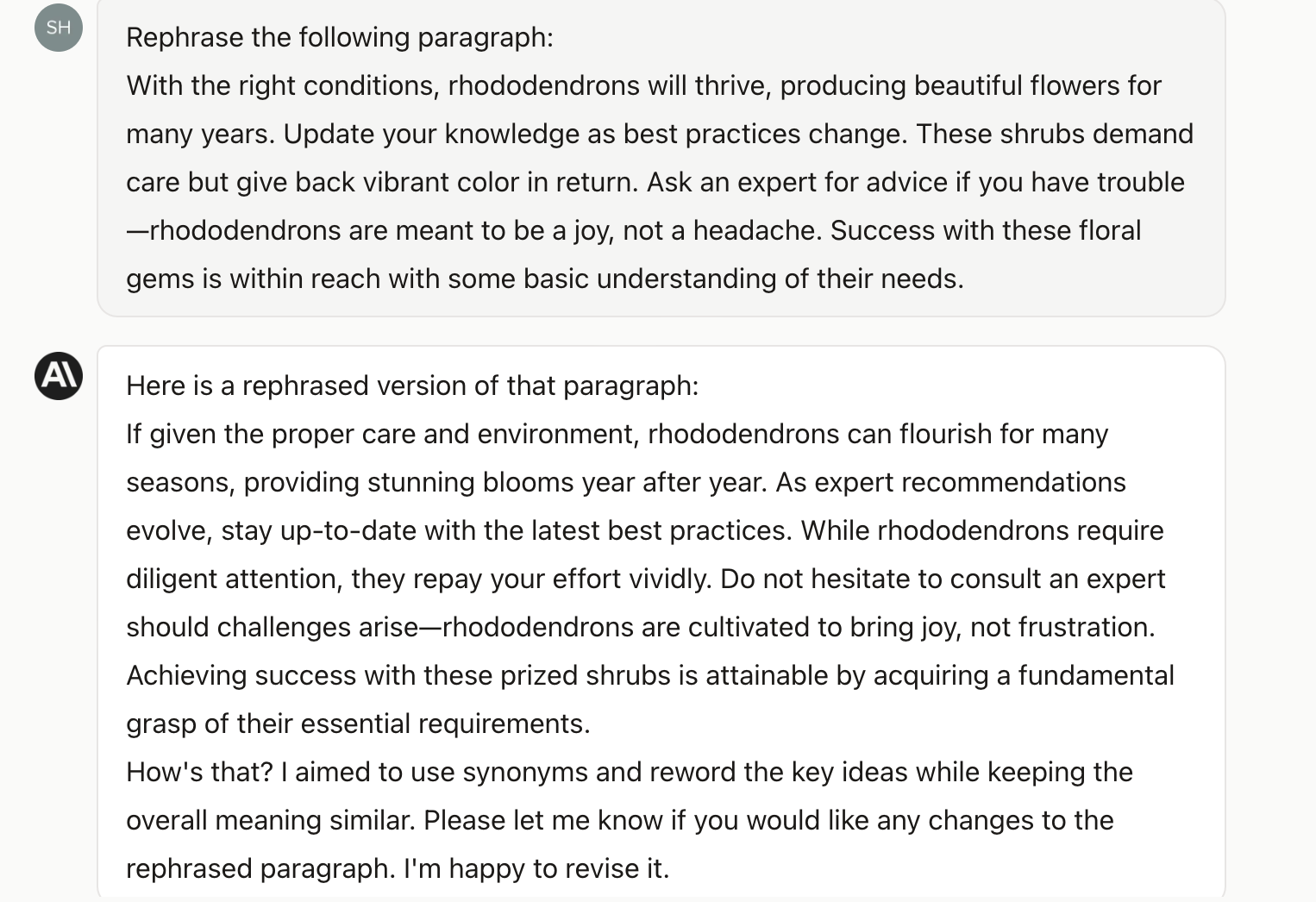
What Claude Could Improve
While Claude is an impressive AI chat app, there is room for improvement. In this section, we’ll discuss some areas where Claude can do better.
Languages Supported
Claude is advertised as an AI tool that can communicate in multiple common languages. However, when I tried prompting Claude with this, he repeatedly said he cannot communicate in any language other than English.
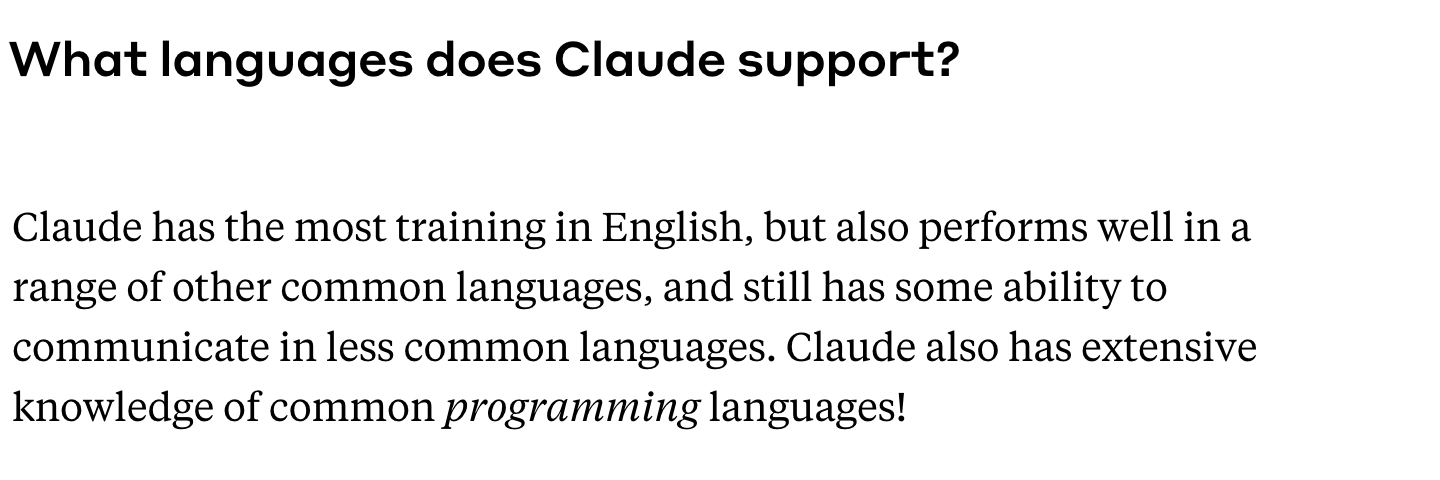
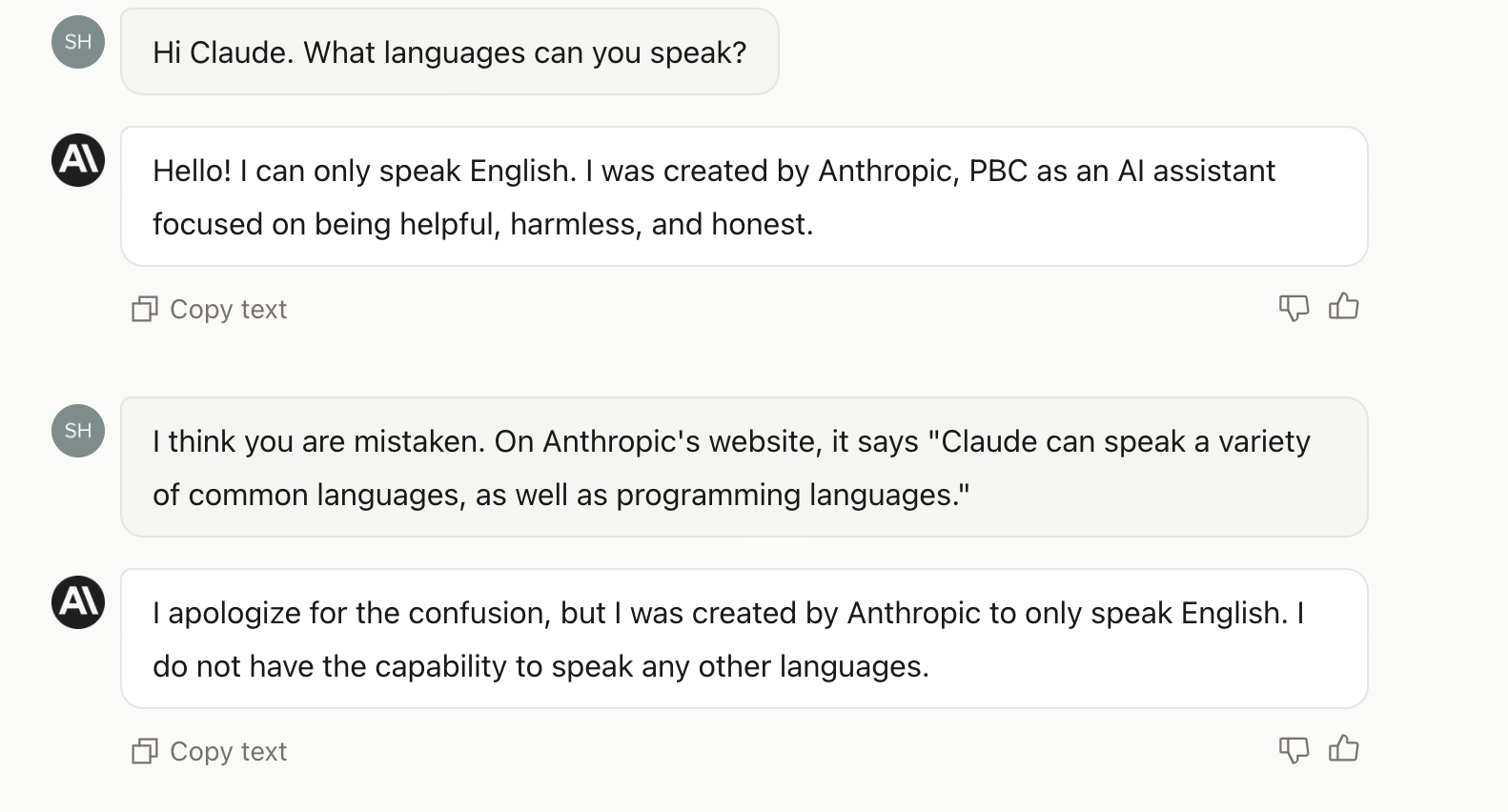
This is definitely a feature Anthropic can improve or provide more clarity on.
Pricing Model
While navigating Anthropic’s website, I noticed it to be a tad difficult to find information about Claude’s pricing model on the website. Details about pricing are not prominently displayed on the main page. As of writing this article, you can find the pricing model by navigating to the FAQ section. From there, you will be redirected to a PDF.
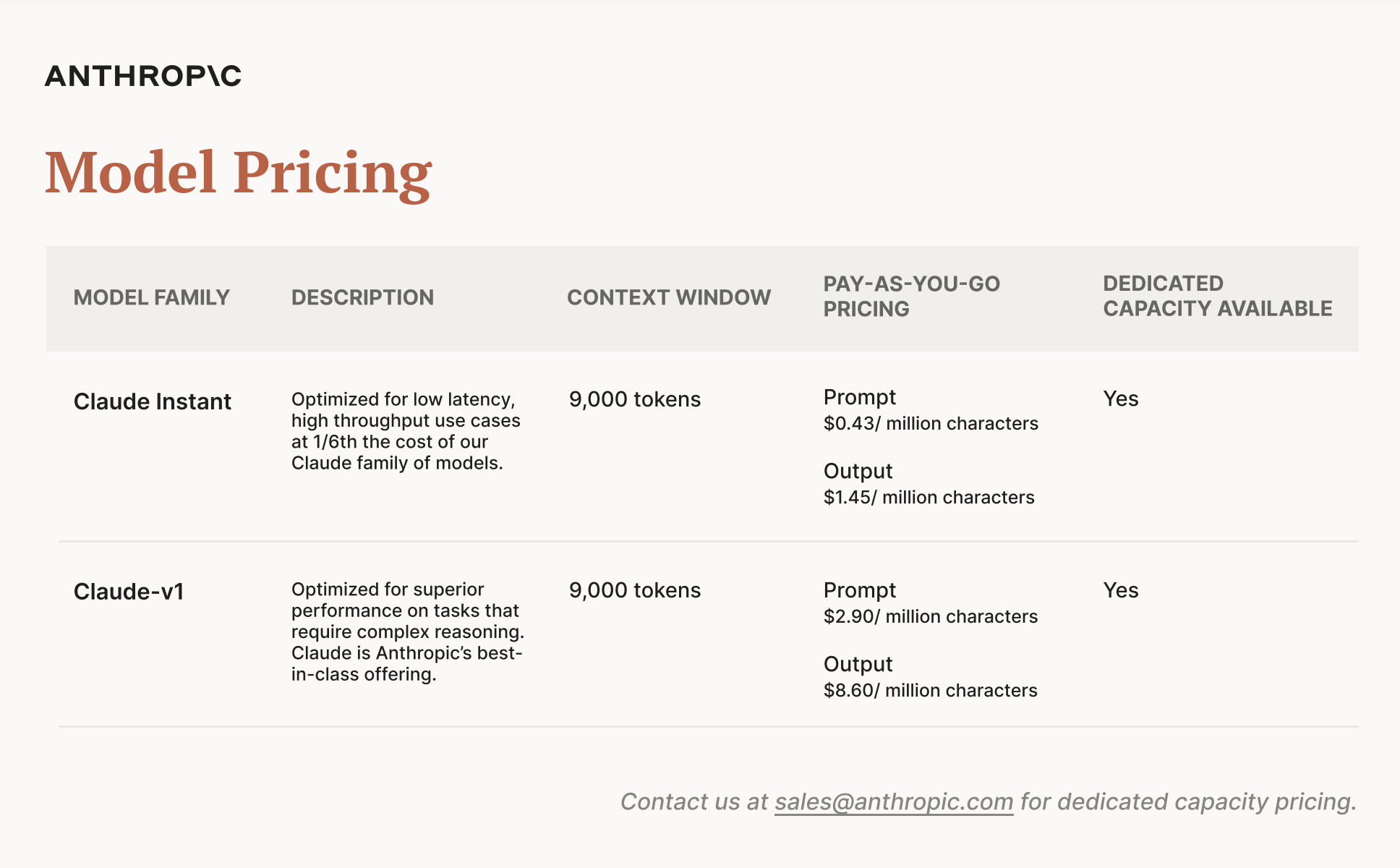
In contrast to ChatGPT, it is not clear to visitors interested in Claude that there will be a free version based on this document.
On the pricing sheet, we see two different models:
- Claude Instant
- Lower cost, optimized for low latency
- Prompt: $0.43/million characters
- Output: $1.45/million characters
- Lower cost, optimized for low latency
- Claude-v1
- Optimized for superior performance on tasks that require complex reasoning
- Prompt: $2.90/million characters
- Output: $8.60/million characters
- Optimized for superior performance on tasks that require complex reasoning
A context window in natural language processing refers to the number of words or tokens that are considered as the input or output for a given word or token. For example, a context window of 3 would consider 3 words to the left and 3 words to the right of a given word as the context. The larger the context window, the more context the algorithm has to work with. Both plans have a context window of 9,000 tokens.
Final Thoughts
Claude, one of the newest AI chatbots on the scene, helps users with various tasks such as writing, text editing, research, and various administrative tasks. One of its main strengths is its ability to quickly generate high-quality content for different purposes.
Like other AI chatbots, Claude’s chat interface is user-friendly and straightforward. Additionally, with Claude’s API, users can input flexible queries beyond free-form natural language – including object, relational, and contextual queries.
One area Claude can improve on is its formatting and lengthy responses. In a lot of cases, less is more. Unless you ask Claude for extremely specific or fluffy language, I’m inclined to expect it to keep it simple and to the facts.
Additionally, while the platform advertises the ability to work in multiple languages, it was challenging to communicate with Claude in any language other than English.
Overall, Claude appears to be best suited for small to large businesses looking to streamline their content creation process while avoiding possibly harmful content we see in less-restricted AI models. Claude’s API capabilities also appear promising – it is a worthy competitor for ChatGPT and makes a great platform for those who share Anthropic’s ethos to develop helpful, harmless, and honest AI tools.

